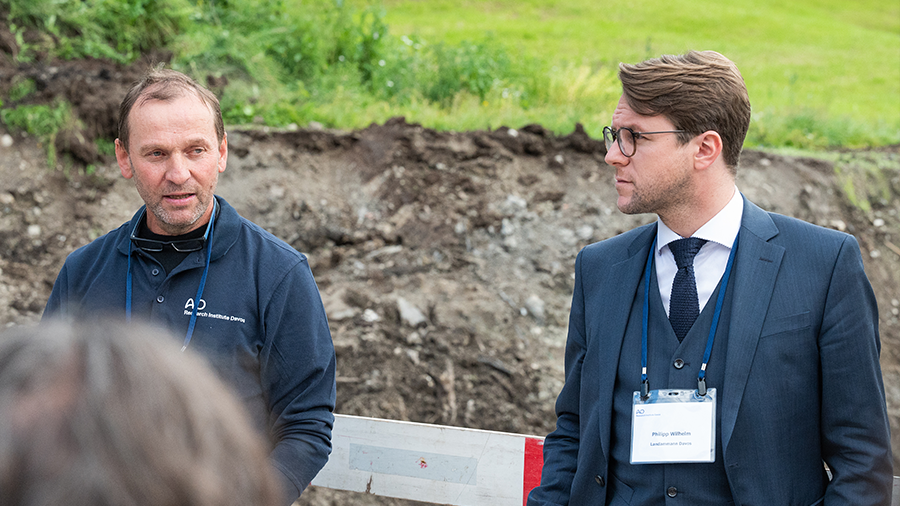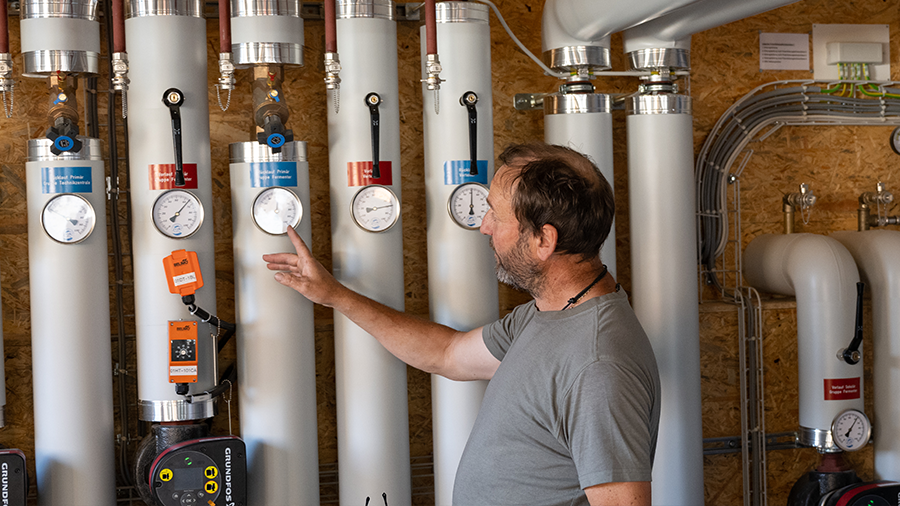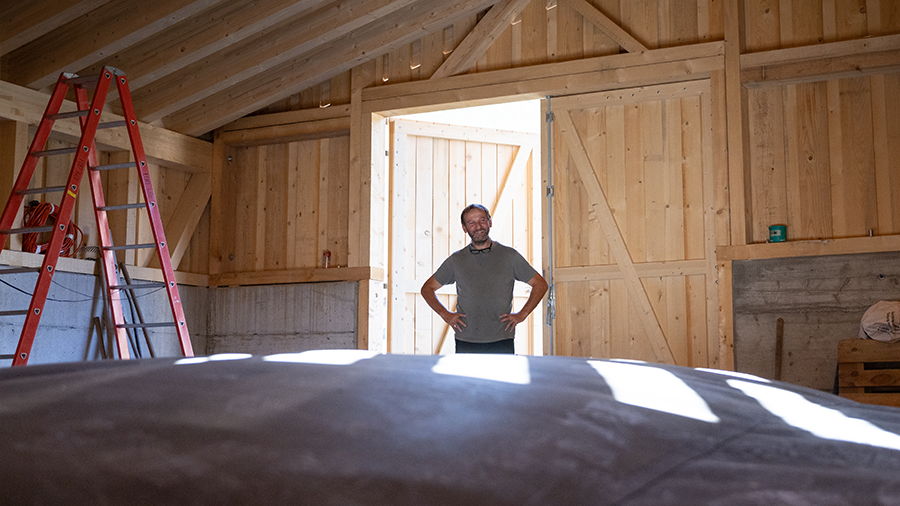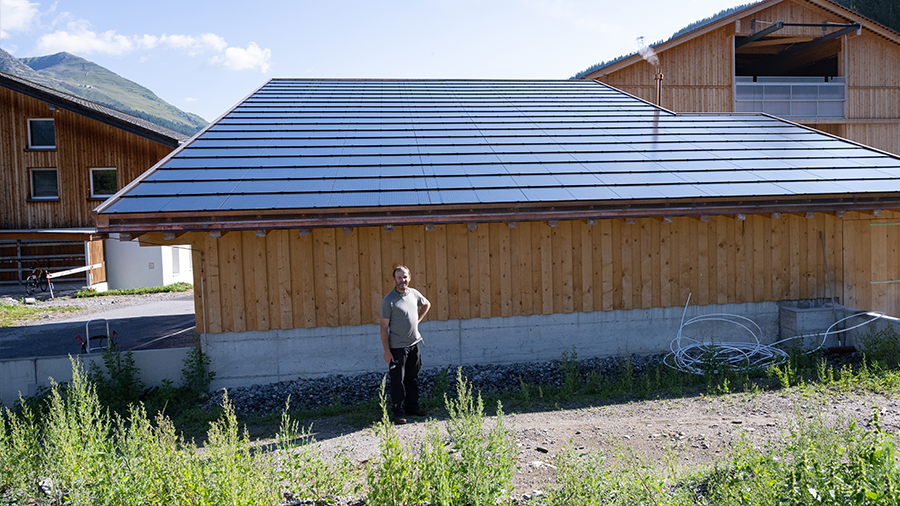Sheep dung to electricity—new ARI biogas reactor goes online
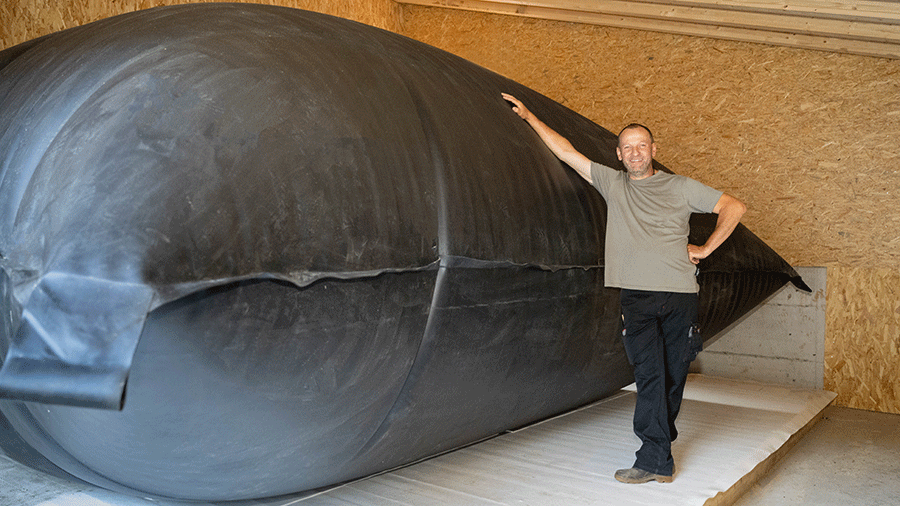
Using manure from the flock of specific-pathogen-free (SPF) sheep at the AO Research Institute Davos (ARI), the plant will drive down the institute’s electricity and heating costs and help decrease its carbon footprint and improve the quality of the dung for fertilizer.
A new biogas plant just started operation at the specific-pathogen-free (SPF) sheep stable that was added last year to ARI's preclinical research facility. The reactor uses manure from the institute’s flock of SPF sheep and local neighbor's cows to generate renewable electrical and thermal energy. Within the next twelve months, the aim is to reduce the yearly electricity and heating bills both for the preclinical facility and the stable itself, though the investment in the actual facility is more of a lighthouse to the local community and will take some years to recuperate.
“The biogas plant is a very interesting option for us,” explains Urban Lanker, the manager of ARI's preclinical facility and the idea and initiator of the project. “We’re a bulk consumer and we require electricity around the clock. With all of its machinery, including ventilation systems and large-scale washing stations, the preclinical facility clocks up around 125,000 kilowatt hours every year.” In comparison, an average four-person household requires around 5,000 kilowatt hours annually.
The biogas plant will also generate enough excess warmth to supply heat to both buildings. In the case of the preclinical facility alone, this means that 40,000 liters of fuel oil can be saved per year. The heat will also be used to generate hot water for the regular disinfection of the sheep stables, eliminating the need to utilize chemical disinfectants. During the warmer summer months, excess warmth from the plant can be routed to the haystacks to ventilate and dry the animal feed—which in turn will itself one day end up in the reactor. Furthermore, the plant is housed by a photovoltaic-paneled roof that generates additional electricity for ARI.
For all its advantages, the idea of including a biogas plant in the SPF facility didn’t come to Lanker until after ground had first been broken on the SPF stable’s building site. “I saw an article in an academic journal about small-scale biogas production and until then, I hadn’t realized how perfect a fit it would be for us,” he recalls.
Once fully operational, the plant will utilize all the manure yielded by ARI’s flock of sheep. The dry dung must be chopped up and mixed with slurry, which is sourced externally from neighborhood farmers. Next, the substrate is put into a fermenter, where microorganisms break it down in the absence of oxygen. The resulting methane is then fed into a storage balloon via a system of tubes before it is subsequently routed to a combined heat and power plant. The material that remains in the biogas plant after the anaerobic digestion process can be used as a high-quality and importantly methane-free fertilizer.
For now, Lanker is immersing himself in the daily operation and maintenance of the new biogas plant. It’s been a steep learning curve, he says, but one that’s been extremely enjoyable. “I am really grateful to the ARI because they always let me try out something new. Building and running this plant is something I’ve had to learn from scratch. But it’s been immensely rewarding, and I am learning new things every day.”
Lanker also believes that the project has relevance beyond its immediate application at ARI—he says it can provide answers to some of the most pressing questions of the day. “With an eye to the current geopolitical situation, I believe that we as a society must do much more to decentralize our energy production. Biogas, I think, can play an important role in this regard.”
Prof Geoff Richards, director of ARI, was extremely excited by the project and requested that the institute invest a little more in the facility to allow visits from local school classes for students to learn about sustainable energy on-site. Lanker devised a tunnel idea to allow school children to see the fermenter in action and left the walls bare so that students can be artistic, and each class will paint a section. Richards mentioned: "I am so proud to have Urban in ARI. He sets an amazing example to all in loyalty, creativity, and empathy."



